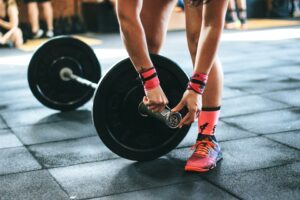Padel Conditioning: Achieving Optimal Fitness for the Court
3 min read
Padel Conditioning: Achieving Optimal Fitness for the Court
If you’re a padel player, you know that the sport requires sharp reflexes, quick movements, and intense concentration. These game aspects make padel a physically and mentally demanding sport, that’s why it’s essential for you to have good conditioning.
In padel, the goal is to hit the ball past your opponents and score points. This requires endurance as matches can last for hours, and your muscles get fatigued. Developing optimal conditioning for padel will help you to keep up your energy levels, improve your agility and strength, and reduce the risk of injury.
In this article, we will discuss the essential aspects of padel conditioning that will help you to achieve optimal fitness for the court.
Cardiovascular Conditioning
Cardiovascular exercises are essential in padel conditioning. A strong cardiovascular system will help you to avoid getting tired quickly, allowing you to play at an optimal level. Running, biking, and swimming, are excellent exercises that will help in getting your cardiovascular system in shape. You can also include other exercises like jumping ropes and plyometrics.
However, the most effective way of achieving optimal cardiovascular conditioning for padel is through interval training. A padel match consists of short sprints, quick stops, and sudden movements. Interval training allows you to replicate these movements and helps you prepare better for matches.
Strength Conditioning
Strength conditioning is essential in padel conditioning as it helps you to become more potent and control your movements. The stronger your muscles are, the more control you’ll have while hitting the ball, which is essential in padel.
When it comes to strength conditioning, you don’t need to have enormous muscles like powerlifters. Instead, you can focus on compound movements like squats, lunges, deadlifts, and pushups. These are essential movements that activate several muscles in your body. You can also include weight training and resistance bands to increase your body strength.
Flexibility Conditioning
Flexibility conditioning is another critical aspect of padel conditioning. A flexible body allows you to move smoothly and reduce the risk of injury. Flexibility exercises like stretching, yoga, and Pilates can help you achieve flexibility in your muscles, tendons, and ligaments.
In padel, the majority of your movements require twisting, reaching, and jumping. By incorporating flexibility exercises into your daily routine, you can increase the range of motion in your joints and improve your performance on the court.
Dietary Conditioning
Dietary conditioning is another critical aspect of padel conditioning. It’s essential to follow a well-balanced diet that includes carbohydrates, proteins, vitamins, and minerals. Carbohydrates provide energy while proteins help in building and repair of muscles. Vitamins and minerals help in maintaining optimal health and performance.
It’s preferable to consume foods that are rich in complex carbohydrates like sweet potatoes, whole grains, and fruits. Additionally, lean proteins like chicken, fish, and lean beef are essential in providing the necessary nutrients to keep your body in top shape.
Conclusion
Padel conditioning is an essential aspect of the sport that helps you to achieve optimal fitness for the court. By focusing on cardiovascular conditioning, strength conditioning, flexibility conditioning, and dietary conditioning, you can achieve a well-rounded and robust body that’s prepared to play at an optimal level.
Remember, padel conditioning is not a single-day event, but a continuous process. Incorporate these practices into your daily routine, and you’ll notice a significant improvement in your performance on the court.







